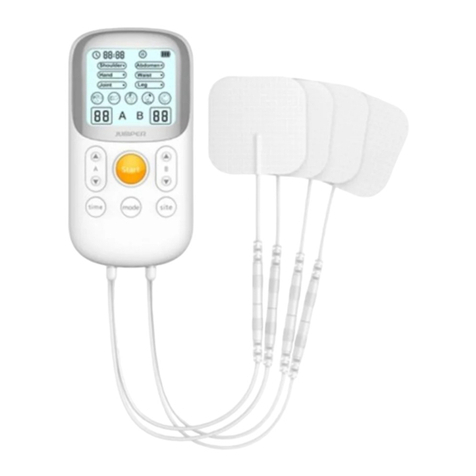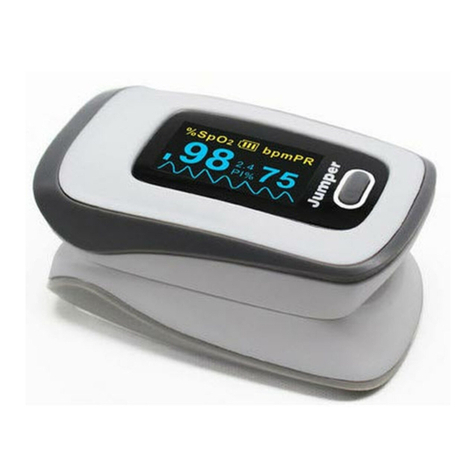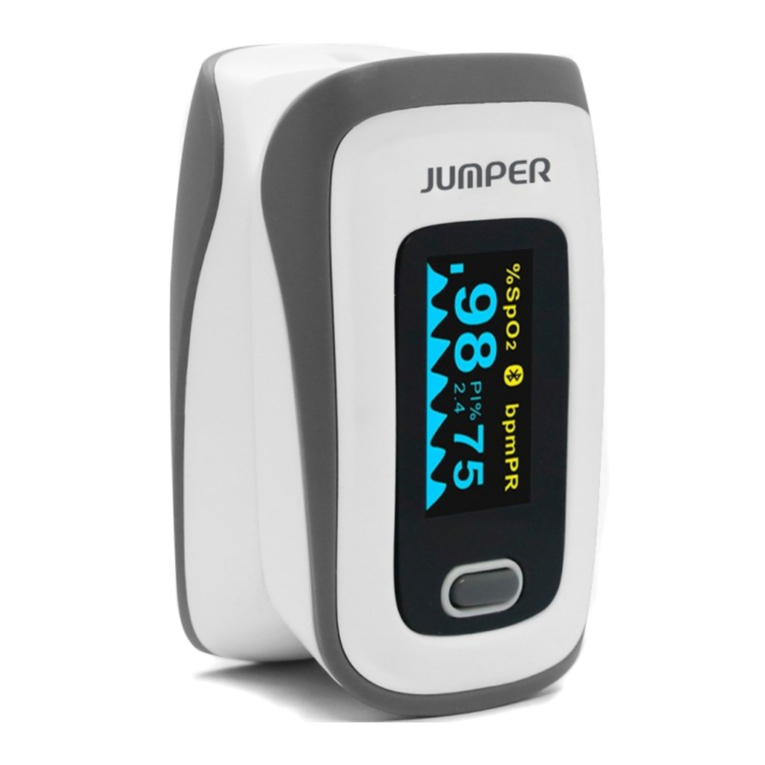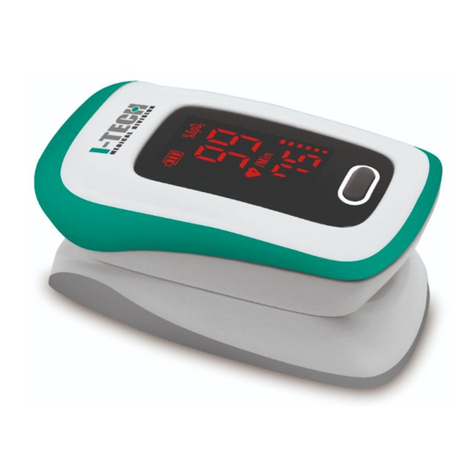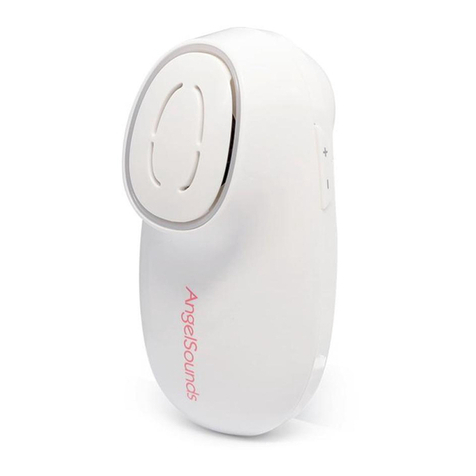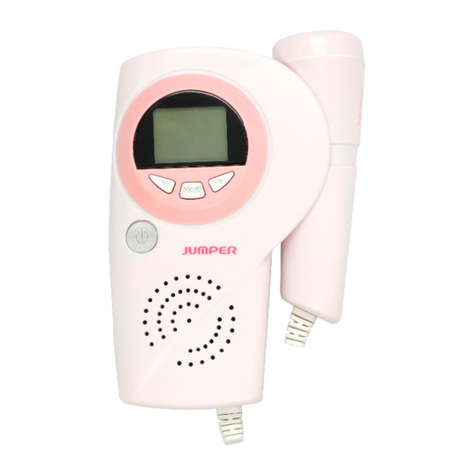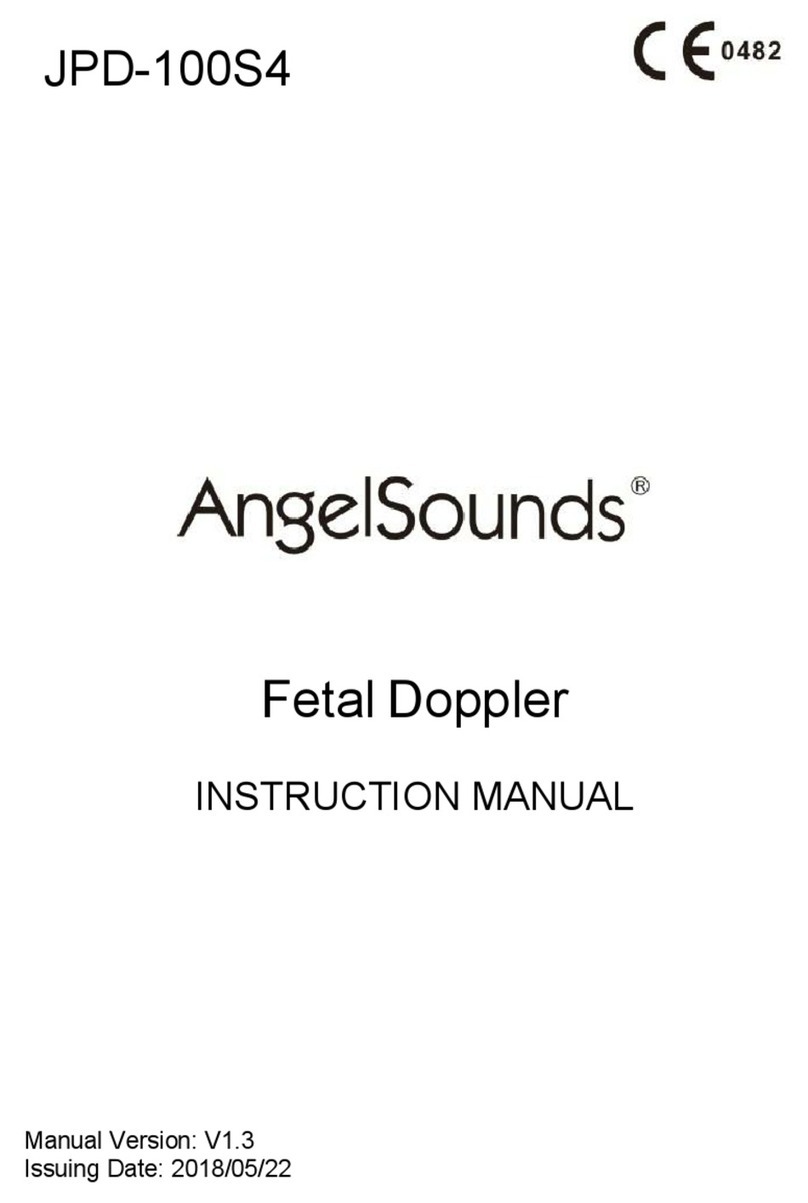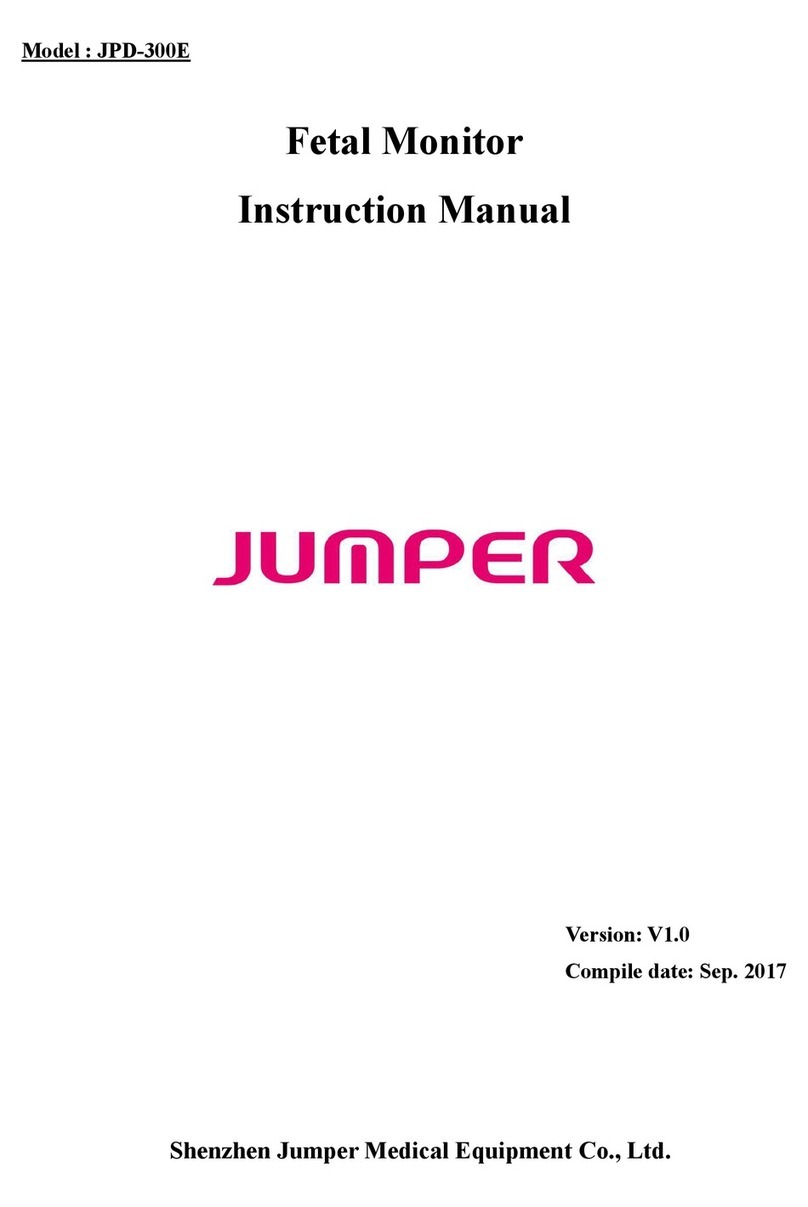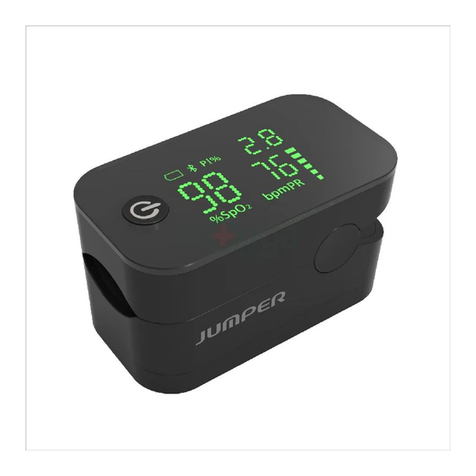
Pulse Oximeter JPD-500G
FCC statement
This device complies with Part 15 of the FCC Rules. Operation is subject
to the following two conditions :
(1) This device may not cause harmful interference.
(2) This device must accept any interference received,including interference that
may cause undesired operation.
NOTE: This equipment has been tested and found to comply with the limits
for a Class B digital device, pursuant to Part 15 of the FCC Rules. These limits
are designed to provide reasonable protection against harmful interference in
a residential installation. This equipment generates, uses and can radiate
radio frequency energy and, if not installed and used in accordance
with the instructions, may cause harmful interference to
radio communications.
However, there is no guarantee that interference will not occur in a particular
installation. If this equipment does cause harmful interference to radio or
television reception, which can be determined by turning the equipment off
and on, the ser is encouraged to try to correct the interference by one or more
of the following measures:
● Reorient or relocate the receiving antenna.
● Increase the separation between the equipment and receiver.
● Connect the equipment into an outlet on a circuit different from that to
which the receiver is connected.
● Consult the dealer or an experienced radio/TV technician for help.
Warning: Changes or modifications to this unit not expressly approved by the
party responsible for compliance could void the user’s authority to operate
the equipment.
Precautions
Do not attempt to repair he Oximeter unless you are professional engineers.
Only professionals with maintenance qualification are allowed to perform interior
maintenance as necessary.
Change the contact position between the Oximeter probe and the finger
periodically if you are monitoring your SpO2 levels and pulse rate for more than 2
hours.
Stop immediately if you have broken skin or the blood circulation of your finger is
affected during prolong use.
This product is not designed to be used by newborn babies.
Seek for medical care if the measured value goes beyond the normal range and you
are sure that the instrument is not malfunctioning.
The pulse oximeter uses infrared light (invisible to your eyes) to measure your
SpO2 levels. Hence, please do not stare at the light-emitting components of the
Oximeter, as that could cause harm and/or potentially blind your eyes.
This pulse oximeter is not a medical device and is not intended to diagnose or
treat any medical condition or disease. It is intended for non-medical use in healthy
people to monitor their pulse and blood oxygen levels during sports and/or aviation
only.
People who need SpO2 and pulse rate measurements because of a medical
condition sh
For details about clinical limitations and contraindications,please carefully
consult relevant medical literatures.
The following factors may affect the accuracy of the measurement:
The Oximeter is used in an environment involving high-frequency devices,
such as high-frequency electric knives and CT apparatuses.
Ambient light intensity is too bright. Hence, please avoid direct exposure to
strong light (such as beams from operating lamps or sunlight) during
measurement.
The probe of the Oximeter is placed on the same arm that a blood pressure
cuff arterial duct or intravenous injection.
The user suffers from hypotension, severe vascular atrophy, severe anemia,
or low oxygen.
The user is in sudden cardiac arrest or shock state.
The user is wearing nail polish or artificial nails.
Warnings
Warning: Do not use the Oximeter in an environment with any flammable gases,
flammable anesthetic, or other flammable substances.
Warning: Keep unit and lanyard away from children as the included lanyard may
present an entanglement or choking hazard to small children. Adult supervision
required; never leave children unattended with unit or lanyard
Warning: Do not throw the batteries into fire, as that could cause an explosion.
Warning: Do not attempt to charge the included batteries, as that could cause
leakage, fire disaster, or even explosion. Dispose the used batteries in accordance
to the local laws and regulations.
Warning: Do not use the Oximeter in an MRI or CT environment.
Warning: Caution: Do not operate the Oximeter if it is wet. Avoid moving the
oximeter from a cold to a hot and humid environment.
Warning: Install the batteries properly before powering on the Oximeter for normal
use. Please remove the batteries if you are not planning to use the Oximeter for a
long time.
Warning: Close the battery cover when the instrument is in use.
Symbols
Caution: Please see this manual.
Symbol of oxygen saturation
When end users abandon this product, they must send
the product to the collection place for recycling.
Overview
Oxygen saturation is the percentage of oxyhemoglobin (HbO2) that is combined
with oxygen against all combinable hemoglobin (Hb). It is an important
physiological parameter involved in respiration and circulation. The oxygen
saturation of arterial blood in a normal human body is 98%. Oxygen saturation is an
important indicator of the oxygen condition in the human body. In general, the
normal values of oxygen saturation shall not be lower than 94%. If the measured
value of oxygen saturation is lower than 94%, an insufficient supply of oxygen is
considered.
The pulse rate is the number of pulse beats per minute. Normally, the pulse rate is
consistent with the heart rate. In general, the pulse rate of every people is 60 to 90
beats per minute.
The Perfusion Index (PI) usually reflects the limb perfusion status of an examined
patient, and shows the detection precision of the instrument as well; that is,
examination can still be performed even in the low or weak perfusion condition.The
PI of a normal human body is 3% or greater.
Working Principles and Usage
Based on full digital technology, the Finger Pulse Oximeter non-invasively measures
the actual content (oxygen saturation) of oxyhemoglobin (HbO2) in arterial blood
using the optical transmittance method.
The Finger Pulse Oximeter measures the blood oxygen saturation and pulse rate of
a human body via finger artery. It is applicable to a wide range of fields, such as
families, hospitals (including operation rooms of the departments of internal
medicine and surgery, the department of anesthesiology, the department of
paediatrics, and intensive care rooms), oxygen bars, social medical care institutions,
and sports & health. Use this instrument for measurement before or after sports.
You are not advised to use this instrument during sports activities. Do not use it for
continuous care for patients.
Schematic Diagram of Display
Schematic Diagram of Display
The following figure shows the information display on the LED screen of the
Oximeter in normal detection state:
Power-On button/Function Button Operations
Press the power-on/function button to turn on the oximeter.Once the it is turned
on.Simply press or hold the button to perform corresponding operations.
